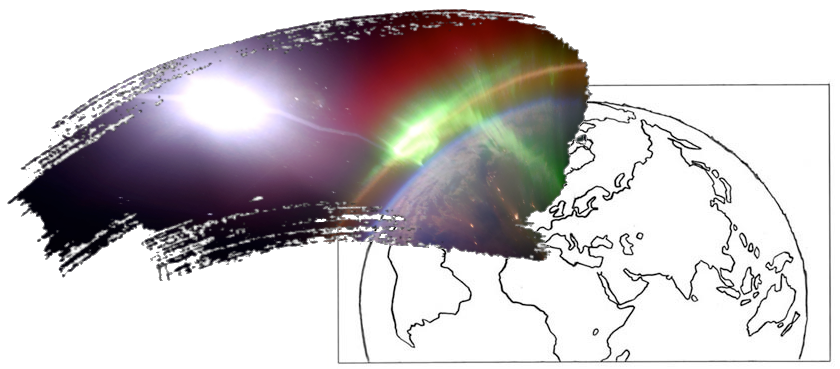STFC RAL with University of Leeds
Project Funded in the CEOI-ST EO9 Call for Mission and Technology Studies in preparation for future ESA Earth Explorer Missions
Pathfinder Project
The aim of this project is to advance the case for the UK-designed LOCUS satellite mission and to make it a strong contender for the upcoming call for the 9th ESA Earth Explorer mission. The Earth Explorers are research missions to address major gaps in scientific knowledge. The LOCUS mission has been conceived by a consortium comprising the University of Leeds, University College London, the Rutherford Appleton Laboratory, and industry partners STAR-Dundee and Surrey Satellite Technologies Ltd. LOCUS will provide new measurements of the transition region between the Earth’s atmosphere and space. The mesosphere – lower thermosphere, or MLT region as it is called, is influenced both from the atmosphere below and by incoming solar uv and x-radiation and charged particles. These drive chemical, radiative and dynamical processes which couple the upper atmosphere with the lower atmosphere and can exert a feedback on climate. The detailed processes that govern the MLT are poorly understood because this is the least well-observed region of the atmosphere. The major component of the upper atmosphere, atomic oxygen, has been measured directly from space on only two brief occasions at mid- and low latitudes from the space shuttle.

Figure 1: LOCUS observes the transition layer between the Earth’s atmosphere and space, the least studied atmospheric regime. It will provide measurement of the global distribution and temporal evolution of important trace gases, some of which are largely unknown. In doing so, LOCUS will provide insights in the links between space weather and climate.
By exploiting cutting-edge UK THz heterodyne receiver and spectrometer technology, the LOCUS limb sounder will provide for the first time global height-resolved atomic oxygen distributions over several years to examine inter-annual variability as well as seasonal variations, which will significantly enhance our understanding of the upper atmosphere. In addition, LOCUS will measure nitric oxide (NO), produced by charged particles in the lower thermosphere and an indicator of solar weather, the hydroxyl radical (OH), which is central to mesospheric chemistry, CO, an excellent tracer of mesospheric transport, molecular oxygen (O2) and ozone (O3), humidity (H2O) and temperature down to the stratosphere. LOCUS will thereby provide the most powerful suite of observations with which to investigate chemical, radiative and dynamical processes controlling the composition and thermodynamics of the upper atmosphere and links to the middle/lower atmosphere and climate.
This proposed project will advance the science case and mission concept by extensive retrieval simulations for targeted species, based new (WACCM) model runs, assessing detectability of NO+ and by engagement with the upper atmosphere research community worldwide to establish a strong international science team and to consolidate the companion infrared sounder.
